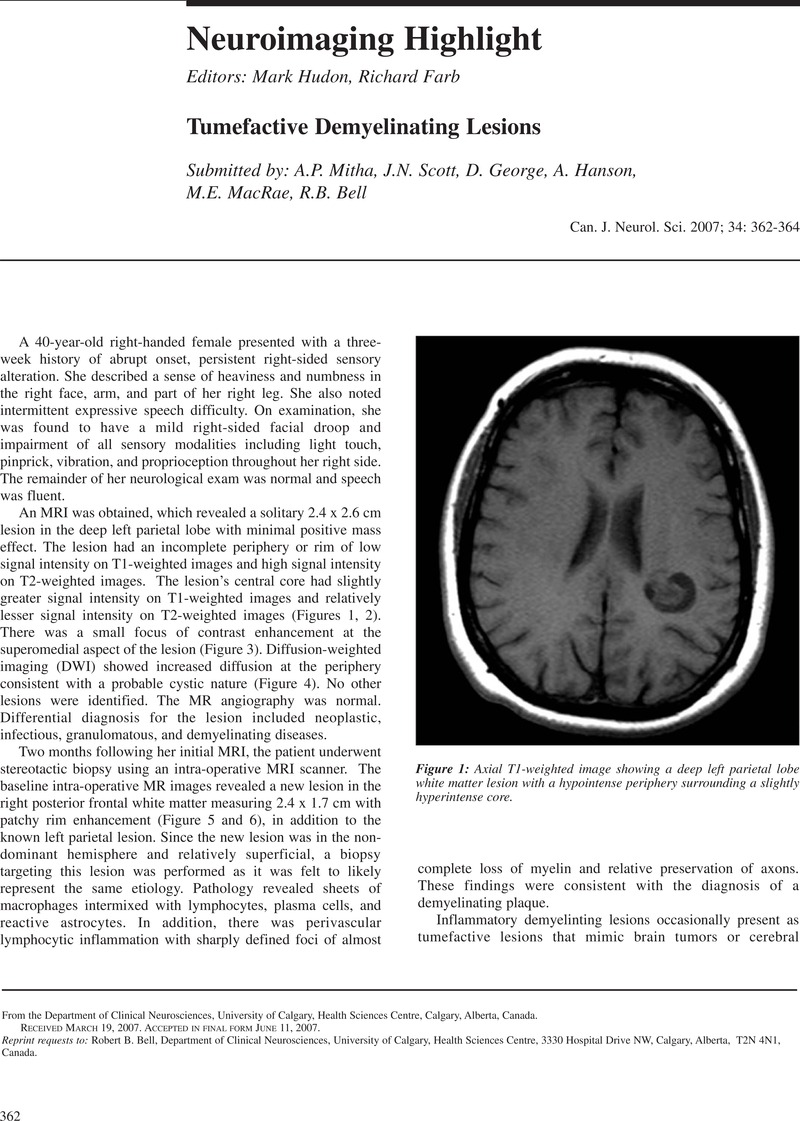Crossref Citations
This article has been cited by the following publications. This list is generated based on data provided by Crossref.
VanLandingham, Matthew
Hanigan, William
Vedanarayanan, Vetta
and
Fratkin, Jonathan
2010.
An uncommon illness with a rare presentation: neurosurgical management of ADEM with tumefactive demyelination in children.
Child's Nervous System,
Vol. 26,
Issue. 5,
p.
655.
QI, WEI
JIA, GE
WANG, XINSHENG
ZHANG, MAOZHI
and
MA, ZHENYU
2015.
Cerebral tumefactive demyelinating lesions.
Oncology Letters,
Vol. 10,
Issue. 3,
p.
1763.
Parks, Natalie E.
Bhan, Virender
and
Shankar, Jai J.
2016.
Perfusion Imaging of Tumefactive Demyelinating Lesions Compared to High Grade Gliomas.
Canadian Journal of Neurological Sciences / Journal Canadien des Sciences Neurologiques,
Vol. 43,
Issue. 2,
p.
316.
Ishikawa, Kohei
Sato, Kenichi
Ito, Tamio
Ozaki, Yoshimaru
Asanome, Taku
Yamaguchi, Yohei
Ishida, Yuuki
Ishizuka, Tomoaki
Okamura, Naoyasu
Fuchizaki, Tomoki
Tanikawa, Satoshi
Tanaka, Shinya
and
Nakamura, Hirohiko
2017.
A Case of Tumefactive Multiple Sclerosis resembling Malignant Glioma.
Japanese Journal of Neurosurgery,
Vol. 26,
Issue. 9,
p.
688.





